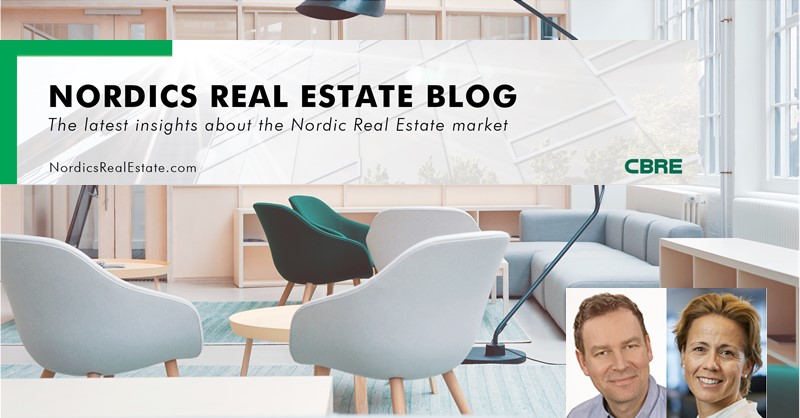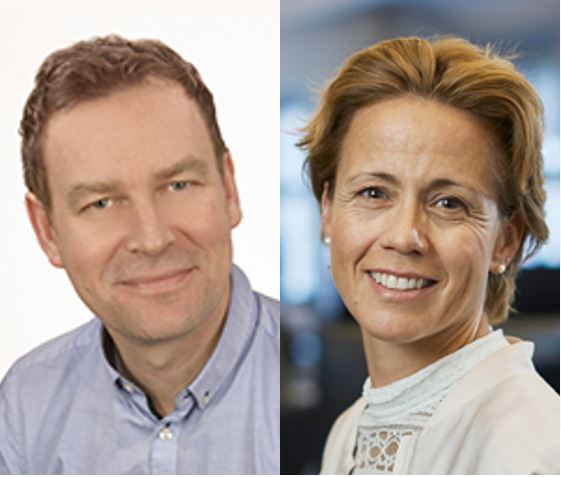Trends that were defining the future of work have been accelerated as organisations have had to adjust during the COVID-19 pandemic. We expect a shift towards more fluid workplaces will become a reality more quickly than anticipated pre-COVID. Our Workplace experts Lise Dybwad and Tommi Ruohonen tells us more.
Technology has proven a useful tool to maintain collaboration and support human interaction in this forced remote work era, but long term it will likely complement not replace the need for the physical workplace. The outcome will likely be a rationalised physical footprint, made up of a different composition of space that is higher quality and better-equipped space to support employee needs.
More fluid workplace
Enhanced technology, a focus on health and wellness and workplace design that supports productivity are just a few hallmarks of the enhanced workplace. The shift we envisaged towards a more fluid workplace anchored by a high quality headquarter space and supported by a network of smaller locations will become a reality more quickly than anticipated pre-COVID. In short, employees will feel more empowered and organisations will feel more comfortable with work not being bound by the physical walls of one workplace.
The design and allocation of space will now be evaluated through the lens of how organisations can limit the transmission of disease, reinforce hygiene and wellbeing and safeguard employee health. Long-term, organisations will redefine what maximum occupancy should be. In some cases, organisations may need to de-densify office space.
We’ve always pushed for organisations to consider a balance of enclosed and open spaces. Even with the increase in remote working, some organisations may need to increase their footprint to get to a more appropriate, socially acceptable balance. The goal is to find an optimal point between having people so separated that the office lacks energy versus the point at which people feel so exposed that they withdraw from interaction. Now (more than ever) we need to be thoughtful about the size of workstations and the distances of spaces amongst people and throughout the office.
Increased focus on healthy workplaces
Occupiers will place a stronger emphasis on building specifications and healthy workplace features as they focus on employee health to preserve long-term productivity. Naturally, people will be concerned about returning to the office and organisations will go to great lengths to ensure their employees are returning to a healthy working environment. Initially this may mean the introduction of self-cleaning surfaces, an increased emphasis on personal hygiene, sanitisation stations and foot and motion activated entry and exit systems.
We may also see a shift to providing personal technology, devices and accessories to limit the transmission of germs through sharing. This will be a challenge for organisations operating on virtual desktops and thin client systems where devices are shared by design.
Long-term, we’ll see a preference for buildings with ‘healthy’ credentials related to indoor air quality and ventilation, as fresh air reduces the spread of airborne germs. The focus on fresh air could potentially hasten the development of more LEED and WELL-certified buildings. Organisations will continue to emphasise the importance of employee wellness and there will be a stronger call for scientific research that evidences the ‘human return’ on investing in wellness programmes and workplace features/services that support these objectives.
Need for back-up locations for critical business functions
The outbreak will force organisations to reassess Business Continuity Planning, particularly the need to maintain back up locations for critical business functions and essential employees. We expect to see organisations consider the formation of alternate teams that can be deployed on different schedules and at different locations (or remotely) during future outbreaks. We may also see a move away from large centralised offices for business-critical operations with organisations instead choosing a greater number of smaller operations in different locations around the world.
Read more about our Workplace Strategy offering:
Norway | Finland | Sweden | Denmark

